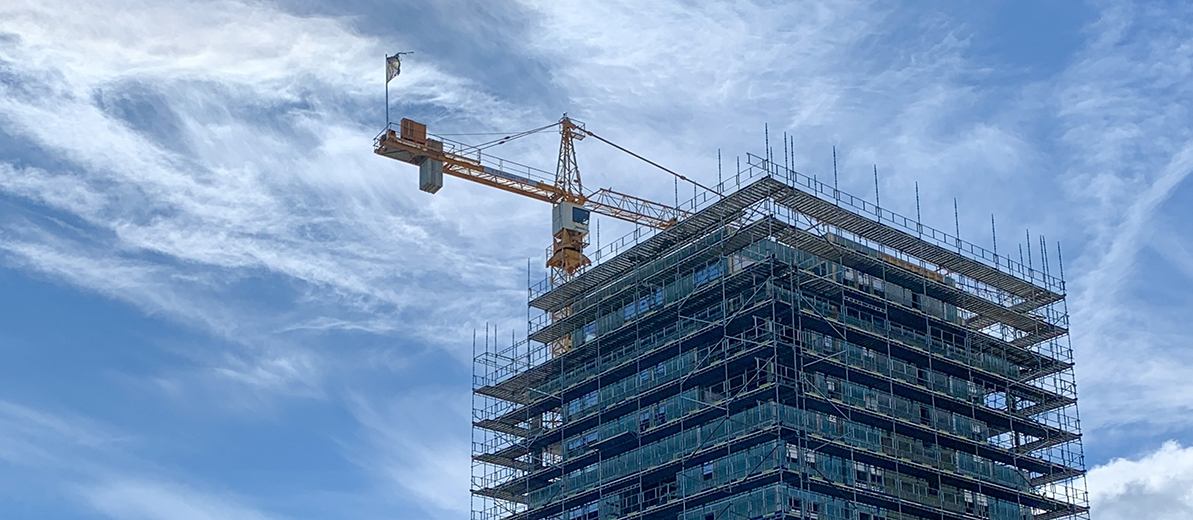
September 15, 2023
Estimating Scaffolding Costs and Delay Claim Allocations on EPC Projects
When estimating costs and executing work on EPC projects, certain commodities or scopes of work are easier to estimate and execute than others.
One of the more difficult cost items to forecast, estimate, and track is scaffolding. Unit rates can be applied to quantities of pipe for a particular size and alloy, cubic yards of concrete, or the number of terminations of electrical cable conductors. Determining how much scaffolding a given scope will require is not as easy.
One must account for several factors affecting scaffolding requirements. For example, which project areas require work at a height that can be performed from an aerial lift? How long does a given scaffold need to remain erected? Can multiple disciplines use the same scaffold, or will it need to be torn down and reassembled due to access issues? How much scaffolding can remain erected with some modifications? These factors complicate scaffolding estimating and cost forecasting for the project team. The factors also make the determination of entitlement from a delay or disruption claim challenging when scaffold costs are involved.
This blog post focuses on scaffolding in terms of:
- Estimating
- Tracking and forecasting material and labor costs during project execution
- Impact of delays and the subsequent apportionment of responsibility
Estimating
Estimating the total cost of scaffolding required is one of the most difficult tasks at the beginning of a project. Even after completion of detailed engineering, determining the amount of scaffolding required is not straightforward. Items that must be detailed in the estimating phase include:
- Scaffolding materials required per month based on the overall erection plan
- Scaffolding labor required to support the erection plan, as well as any modifications needed
- Indirect costs (preliminaries), such as management personnel, support staff, insurance, and temporary facilities associated with the scaffolding contractor
The level of detail to which these items can be estimated depends on the maturity of the overall project design, which affects the ability to determine where scaffolding will be required and for what duration. In lieu of creating a detailed scaffolding plan, contractors often implement a simpler approach and estimate the scaffolding labor and costs based on a percentage of the estimated direct labor hours for mechanical, piping, electrical, instrumentation, and insulation.
Execution
During project execution, scaffolding rate analysis allows for contemporaneous comparison with the estimated plan. Also, the greater the level of detail at which costs are captured, the easier it will be to perform potential claim analyses. Items to consider include:
- Material and labor tracked based on the type of scaffold (simple structures, engineered builds, etc.)
- Material and labor tracked based on the scaffold location
- Material and labor tracked based on the scaffold user at the time
On a typical industrial project, scaffolds may be built around a structure and used over the course of the project for the installation of equipment, followed by piping, followed by electrical and instrumentation, followed by insulation. Moreover, each trade may require a slightly different scaffold configuration, which comes at additional costs.
Impacts on Delay and Disruption
On EPC projects, claims of delay or disruption may involve and impact many parties across multiple scopes of work. And because multiple contractors typically share the scaffolds on a project, the process of equitably allocating the associated delay impacts and costs can be challenging.
Typically, a delay claim involving scaffolding costs could include the following:
- Additional scaffolding material costs due to extended duration on site
- Thickening costs for scaffolding materials because more materials were needed on site than the planned peak
- Thickening costs for scaffolding labor because more manpower was needed on site than the planned peak
- Prolongation costs for indirect costs such as management and temporary facilities due to extended project duration
Summary
Overall, scaffolding is one of the more difficult scope items to estimate and track on an EPC project. In relation to delay claims, that difficulty is compounded by the need to equitably apportion the responsibility for delay for scaffolding costs that multiple contractors typically share. This added layer of complexity highlights the need for robust, detailed contemporaneous cost tracking and claims analysis approaches to ensure an equitable allocation of scaffolding delay impacts and costs.
ADDITIONAL RESOURCES

Blog
Discover industry insights on construction disputes and claims, project management, risk analysis, and more.
MORE

Articles
Articles by our engineering and construction claims experts cover topics ranging from acceleration to why claims occur.
MORE

Publications
We are committed to sharing industry knowledge through publication of our books and presentations.
MORE
RECOMMENDED READS
Cost Control for the Project Manager
This article discusses the definitions of cost control, including estimating, execution phase, and various types of cost overruns.
READ
Construction Claims for Variation in Quantity
A component of a construction claim often relates to the cost, quantity, and quality of the materials that the contractor installed on a project.
READ
Construction Claim Types for Contractors
U.S. federal and state courts recognize 19 basic construction claim entitlements for a contractor’s recovery of damages.
READ

